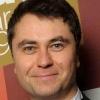
Algorithmic Exposure and CVA for Exotic Derivatives
Download this Complimentary Numerix Quantitative Research Paper
In this article, we develop the algorithmic approach for Counterparty exposure calculation and automate its application to arbitrary complicated instruments. Assuming that the portfolio is priced by the backward (American) Monte-Carlo method, our approach allows calculating the credit exposure as a pricing by-product, essentially without modifications in the usual pricing procedure. In particular, for the exposure calculation of callable instruments, we manage to avoid a cumbersome aggregation of exercise indicators, applying them sequentially in parallel with the main pricing.
We explain how the obtained exposure can be integrated into the Credit Valuation Adjustment (CVA), based on the extension of the pricing model with a Counterparty credit component. The presented approach to the exposure computation is formulated in an arbitrary probability measure. To perform the measure change we use the cross-currency model semantics and calibrate the model to the real-world measure using indexes projections.
Authors: Alexandre Antonov, Serguei Issakov, and Serguei Mechkov
In this article, we develop the algorithmic approach for Counterparty exposure calculation and automate its application to arbitrary complicated instruments. Assuming that the portfolio is priced by the backward (American) Monte-Carlo method, our approach allows calculating the credit exposure as a pricing by-product, essentially without modifications in the usual pricing procedure. In particular, for the exposure calculation of callable instruments, we manage to avoid a cumbersome aggregation of exercise indicators, applying them sequentially in parallel with the main pricing.
We explain how the obtained exposure can be integrated into the Credit Valuation Adjustment (CVA), based on the extension of the pricing model with a Counterparty credit component. The presented approach to the exposure computation is formulated in an arbitrary probability measure. To perform the measure change we use the cross-currency model semantics and calibrate the model to the real-world measure using indexes projections.
Authors: Alexandre Antonov, Serguei Issakov, and Serguei Mechkov
Authors

Dr. Alexandre Antonov
Dr. Antonov received his PhD degree from the Landau Institute for Theoretical Physics in 1997 and joined Numerix in 1998, where he currently works as a Senior Vice President of Quantitative Research. His activity is concentrated on modeling and numerical methods for interest rates, cross currency, hybrid, credit and CVA. Dr. Antonov is a published author for multiple publications in mathematical finance, including RISK magazine and a frequent speaker at financial conferences.

Serguei Issakov, Ph.D.
Dr. Issakov, as Chief Quantitative Officer and Senior Vice President of Global Quantitative Research and Development, oversees the company’s quantitative research globally, including the research of pricing models at Numerix. Since joining Numerix in 1999, his earlier roles at Numerix included Vice President of Financial Applications, Head of Engine Development (the forerunner to Numerix 7) and Head of Risk Analytics.
Prior to joining Numerix, Dr. Issakov held research positions in theoretical physics at the Nordic Institute for Theoretical Physics in Copenhagen, the University of Paris (Laboratory of Theoretical Physics and Statistical Models), the University of Oslo and the Center for Advanced Study in Oslo. Before that, he led research on models of brain rhythms at the Medical Radiological Center in Obninsk Russia.
Dr. Issakov has published over 40 papers in mathematics and theoretical physics. He is a co-author of the Issakov-Ouvry-Wu equations in fundamental quantum statistical mechanics. He has received numerous fellowships and research grants, including a NATO Visiting Professorship and grants from the Russian Foundation for Basic Research. He holds PhD in Theoretical and Mathematical Physics from Moscow Institute of Physics and Technology, from the Theory Group led by Physics Nobel Laureate Vitaly Ginzburg.

